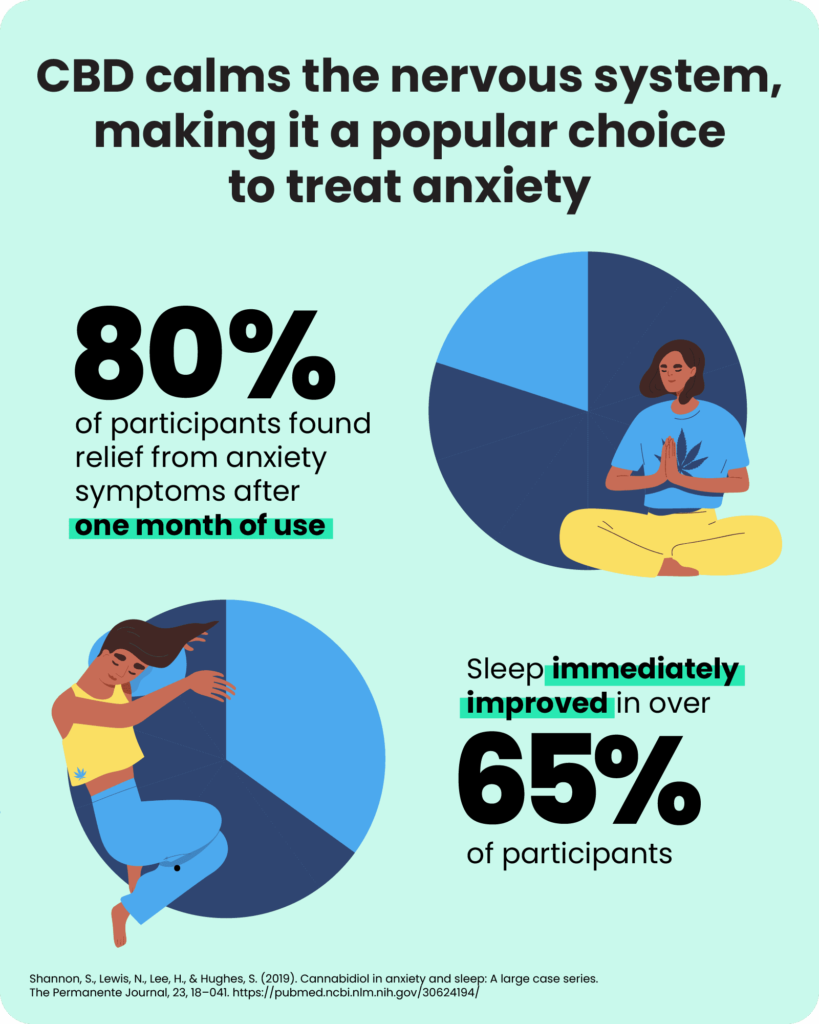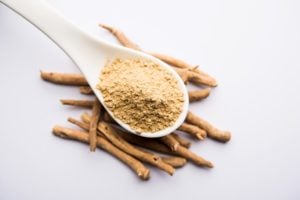Cannabis for Sleep: Risks and Benefits
- Cannabis may improve sleep in people with chronic pain, post-traumatic stress disorder, and restless legs syndrome.
- Cannabis may induce sleep by suppressing arousal and increasing adenosine.
- The relaxing effects of sativa versus indica depend on amount, timing and the individual.
- Studies suggest cannabis can help insomnia, but long-term use may negatively influence sleep.
Cannabis, also called marijuana, is widely used as a sleep aid, both recreationally and among medical users. Around 70% of young adults that casually use cannabis report that they do so to help them sleep. Among people who use cannabis for medical reasons, such as pain relief, as many as 85% say it improves their sleep.
Research into cannabis as a sleep aid is still developing. Cannabis may help relieve insomnia when used occasionally, though researchers are unsure whether long-term use is ultimately beneficial or detrimental for sleep quality.
Does Cannabis Help You Sleep?
Cannabis appears to improve sleep in certain cases. For people with certain conditions such as chronic pain, post-traumatic stress disorder (PTSD), and multiple sclerosis, cannabis may help them fall asleep faster, wake up less during the night, and enjoy better sleep quality overall. A recent study also found that cannabis effectively relieves symptoms for people with restless legs syndrome (RLS).
Many people use cannabis to self-treat insomnia, anxiety, and pain. Among these users, the effectiveness of cannabis for sleep is more ambivalent, though a study conducted on individuals with insomnia found that many participants reported relief from their symptoms when using cannabis.
Some studies have found a distinction between daily users and less frequent, non-daily users in how cannabis affects their sleep. Those who use cannabis daily are more likely to report more sleep problems than occasional users or people who do not use cannabis at all. Non-daily users report fewer sleep issues than both daily users and non-users.
How Does Cannabis Work as a Sleep Aid?
It is believed that the sleep-promoting effects of cannabinoids are due to their interactions with cannabinoid receptors in the brain. When cannabinoids bind to these receptors, they send messages to increase levels of sleep-promoting adenosine and suppress the brain’s arousal system. Together, these effects may help cannabis users feel sedated or sleepy.
Cannabis has several different active compounds, including tetrahydrocannabinol (THC) and cannabidiol (CBD). While THC typically acts as a sedative, it can have a stimulating effect for some people, especially for those who are new to using cannabis or taking higher doses. In these cases, using cannabis before bed may result in a longer time falling asleep. CBD appears to promote alertness at lower doses, and sleepiness at higher doses.
Both CBD and THC may also have benefits for chronic conditions that interfere with sleep. However, the effects of the two compounds together may depend on the dose and timing.
For example, synthetic forms of THC have shown potential for treating obstructive sleep apnea, reducing PTSD-related nightmares, and improving sleep for people living with chronic pain. CBD, on the other hand, may reduce symptoms of REM sleep behavior disorder and excessive daytime sleepiness.
When using cannabis as a sleep aid, the effects you feel may depend on the type of cannabis you are using. Cannabis has higher concentrations of THC, the primary psychoactive component. Hemp plants have higher levels of CBD.


Does Cannabis Affect Your Sleep Quality?
In addition to helping you fall asleep faster, cannabis may alter your time spent in the different sleep stages. Short-term cannabis use appears to increase the time you spend in non-rapid eye movement (NREM) sleep, the stages that help you wake up feeling refreshed. However, THC decreases the amount of time you spend in rapid eye movement (REM) sleep, when you spend more time dreaming, processing emotions, and cementing new memories.
Decreasing REM sleep may have some benefits for people with PTSD, since nightmares are a common and disturbing symptom. A study on women with PTSD found that those with more severe PTSD symptoms and poor sleep were more likely to use cannabis to help them cope. One study found that synthetic forms of cannabis significantly decreased nightmares, or stopped them completely, for people with PTSD. Some participants in this study also reported experiencing better overall sleep quality and fewer daytime flashbacks.
How Is Cannabis Different from Other Natural Sleep Aids?
Because cannabis is considered a controlled substance, there is limited research on the safety and efficacy of cannabis sleep aids compared to other sleep aids. Only a few synthetic drugs made to mimic THC, as well as one naturally derived CBD product, have been approved by the FDA. These are prescribed for nausea and other conditions, but not sleep.
As with other natural sleep aids, it is possible that some people may turn to medical cannabis in an effort to avoid more potent drugs, such as opioids. Although they can be very effective in the short term, many prescription and over-the-counter sleep medications are associated with a risk of abuse, tolerance, or dependence . Some natural sleep aids, like oral melatonin , appear to reduce insomnia without strong side effects, while other homeopathic options, like valerian, still need more research.
Which Type of Cannabis Is Best For Sleep?
There are different strains of cannabis, which each produce different effects. The most common strains are indica and sativa:
- Indica is thought to be more calming, and may help produce feelings of relaxation and sleepiness. People appear to prefer indica for pain management, relaxation, and sleep.
- Sativa is considered more stimulating, and it may produce feelings of euphoria for some. People tend to use sativa to gain an energy boost.
Most of the differences attributed to sativa versus indica strains are based on the subjective experiences of cannabis users. Some researchers argue that the distinction between indica and sativa strains is less relevant than the variety in THC content and other ingredients in any particular product. Hybrid strains with a mix of indica and sativa may produce different effects based on the specific makeup of cannabinoids and other ingredients.
Risks and Side Effects of Using Cannabis for Sleep
Used on a short-term basis, cannabis may help you fall asleep faster. Health experts generally do not recommend using sleep aids, including cannabis, on a long-term basis, because of their potential to negatively impact your sleep quality and cause other side effects.
Studies suggest that heavy cannabis use, especially on a long-term basis, may have consequences for sleep, including:
- Less sleep overall
- Less time spent in deep sleep
- Longer time to fall asleep
- Frequent awakenings
Long-term cannabis use may also have health-related side effects. Studies have found the substance may reduce the volume of gray matter in your brain and, when smoked, increase your risk of chronic bronchitis . Cannabis withdrawal can also produce sleep-related side effects, such as strange dreams, difficulty falling asleep, and less time spent in deep sleep. Health experts also recommend people avoid using cannabis while pregnant or breastfeeding.
Tips When Using Cannabis for Sleep
If you plan on trying cannabis as a sleep aid, your care provider can provide the best guidance based on your needs and medical history. However, it helps to have an understanding of the different options available.
Which Form of Cannabis to Use for Sleep
Cannabis can be smoked, vaporized, eaten, or placed under the tongue as a sublingual tincture. Each form has drawbacks and bioavailability, or how much of the active THC you can expect to make it into your bloodstream. Those who are concerned about the effects of smoke on the lungs may prefer to avoid smoking it.
Inhaled cannabis tends to have high bioavailability, as the THC enters your system directly. By contrast, edibles lose a significant amount of THC through the digestive process. Smoked cannabis can have bioavailability rates as high as 56%, compared with 4% to 20% for orally ingested cannabis. Those who are concerned about the effects of smoke on the lungs may prefer to avoid smoking it.
When to Take Cannabis for Sleep
When choosing a type of cannabis, it is worth noting that different forms also take more or less time to produce effects. When you smoke cannabis, you can generally feel the effects almost immediately, whereas edibles can take longer to have an effect as they must work their way through your digestive system first.
The effects of smoked cannabis are highly variable depending on the person, the length of inhalation, the number of times it is inhaled, and other factors. Generally, THC levels peak after about 10 minutes.
What Effects You May Notice
Because cannabis comes in a variety of strains and affects everyone differently, you may need to experiment before you find the format, dosage, and timing that work for you. THC is a psychoactive drug that tends to have other effects apart from promoting sleep. You may feel sleepy, relaxed, euphoric, or energized.
When using cannabinoids, some users may also experience dizziness, nausea, fatigue, dry mouth, vomiting, confusion, loss of balance, or hallucinations. You may also experience anxiety, panic attacks, or paranoia.
Cannabis is not recommended for young children and adolescents, as cannabis use has been linked to changes in the developing brain .
Deciding If Cannabis Is Right for You
Whether or not to use cannabis for sleep is a highly personal decision. Synthetic forms of cannabis appear to relieve nightmares and insomnia, but some researchers warn about the limitations of these studies and the potential risks of using cannabis until dosing is more standardized.
Many people use cannabis to successfully manage their pain and insomnia. However, some people find it makes them feel more paranoid or anxious. If you do not like the feeling of being high, a strain with a higher amount of CBD may be a better option for you.
Another important consideration is whether cannabis is legal where you live. If not, talk to your doctor about other ways to improve your sleep, such as better sleep hygiene or alternative sleep aids.
Medical Disclaimer: The content on this page should not be taken as medical advice or used as a recommendation for any specific treatment or medication. Always consult your doctor before taking a new medication or changing your current treatment.
References
10 Sources
-
Kuhathasan, N., Dufort, A., MacKillop, J., Gottschalk, R., Minuzzi, L., & Frey, B. N. (2019). The use of cannabinoids for sleep: A critical review on clinical trials. Experimental and Clinical Psychopharmacology, 27(4), 383–401.
https://pubmed.ncbi.nlm.nih.gov/31120284/ -
Vigil, J. M., Stith, S. S., Diviant, J. P., Brockelman, F., Keeling, K., & Hall, B. (2018). Effectiveness of raw, natural medical Cannabis flower for treating insomnia under naturalistic conditions. Medicines (Basel, Switzerland), 5(3), 75.
https://pubmed.ncbi.nlm.nih.gov/29997343/ -
Kwasnik, A., Abreu, A. & Chediak, A. (2020). Cannabinoids and sleep: Helpful or harmful?. Curr Pulmonol Rep, 9, 96–101.
https://link.springer.com/article/10.1007/s13665-020-00254-y -
Lie, J. D., Tu, K. N., Shen, D. D., & Wong, B. M. (2015). Pharmacological treatment of insomnia. P & T: A Peer-Reviewed Journal for Formulary Management, 40(11), 759–771.
https://pubmed.ncbi.nlm.nih.gov/26609210/ -
Xie, Z., Chen, F., Li, W. A., Geng, X., Li, C., Meng, X., Feng, Y., Liu, W., & Yu, F. (2017). A review of sleep disorders and melatonin. Neurological Research, 39(6), 559–565.
https://pubmed.ncbi.nlm.nih.gov/28460563/ -
Piomelli, D., & Russo, E. B. (2016). The Cannabis sativa versus Cannabis indica debate: An interview with Ethan Russo, MD. Cannabis and Cannabinoid Research, 1(1), 44–46.
https://pubmed.ncbi.nlm.nih.gov/28861479/ -
Battistella, G., Fornari, E., Annoni, J. M., Chtioui, H., Dao, K., Fabritius, M., Favrat, B., Mall, J. F., Maeder, P., & Giroud, C. (2014). Long-term effects of cannabis on brain structure. Neuropsychopharmacology: Official Publication of the American College of Neuropsychopharmacology, 39(9), 2041–2048.
https://pubmed.ncbi.nlm.nih.gov/24633558/ -
Tashkin, D. P. (2013). Effects of marijuana smoking on the lung. Annals of the American Thoracic Society, 10(3), 239–247.
https://pubmed.ncbi.nlm.nih.gov/23802821/ -
Volkow, N. D., Swanson, J. M., Evins, A. E., DeLisi, L. E., Meier, M. H., Gonzalez, R., Bloomfield, M. A., Curran, H. V., & Baler, R. (2016). Effects of cannabis use on human behavior, including cognition, motivation, and psychosis: A review. JAMA Psychiatry, 73(3), 292–297.
https://pubmed.ncbi.nlm.nih.gov/26842658/ -
Steenkamp, M. M., Blessing, E. M., Galatzer-Levy, I. R., Hollahan, L. C., & Anderson, W. T. (2017). Marijuana and other cannabinoids as a treatment for posttraumatic stress disorder: A literature review. Depression and Anxiety, 34(3), 207–216.
https://pubmed.ncbi.nlm.nih.gov/28245077/






















